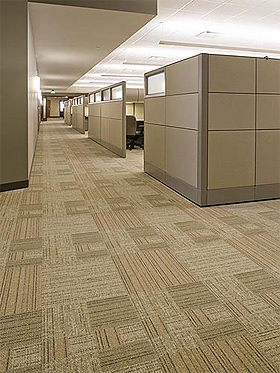Carpet
According to the Carpet and Rug Institute, the industry’s trade association, 70 percent of US floors are covered with carpets and rugs. Carpet’s lifecycle impacts include chemical emissions from manufacturing, depletion of petroleum and other natural resources, transportation, indoor air quality concerns, and disposal costs at landfills and recycling operations.
To minimize health and environmental impacts, many companies offer recycled content backing, modular tiles that extend carpet life, recycled content cushion, low- or no-VOCs (volatile organic compound) adhesives, refurbishing programs that extend flooring life, and recovery programs that keep flooring out of the landfill. Several manufacturers have even committed to reduce the life-cycle impacts of flooring by lowering emissions during manufacturing, using solar or other renewable energy to power their plants, and making a commitment to reducing waste, toxics, and non-renewable resource depletion.

Choose
- low levels of VOC
- environmentally certified carpet
- recycled content
- recyclable
- proper maintenance
Avoid
- virgin fiber content
- PVC backing
- anti-microbials
- harsh chemical cleaners
End of Life
- recycling and manufacturer take back programs "where available"
An EPA checkmark indicates a certification or standard is recommended by the U.S. Environmental Protection Agency (EPA).
Product Stewardship Institute - Carpet: A guide to environmentally friendly carpet
Advancing Carpet Stewardship: A How-To Guide (2015): Product Stewardship Institute comprehensive guide to sustainable carpet
Carpet America Recovery Effort (CARE) - a joint industry-government effort to increase the amount of recycling and reuse of post-consumer carpet
Contact Us
Phone: 206-263-9400
TTY Relay: 711
Fax: 206-296-7676

 Translate
Translate